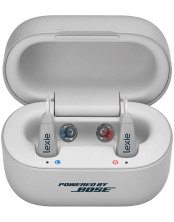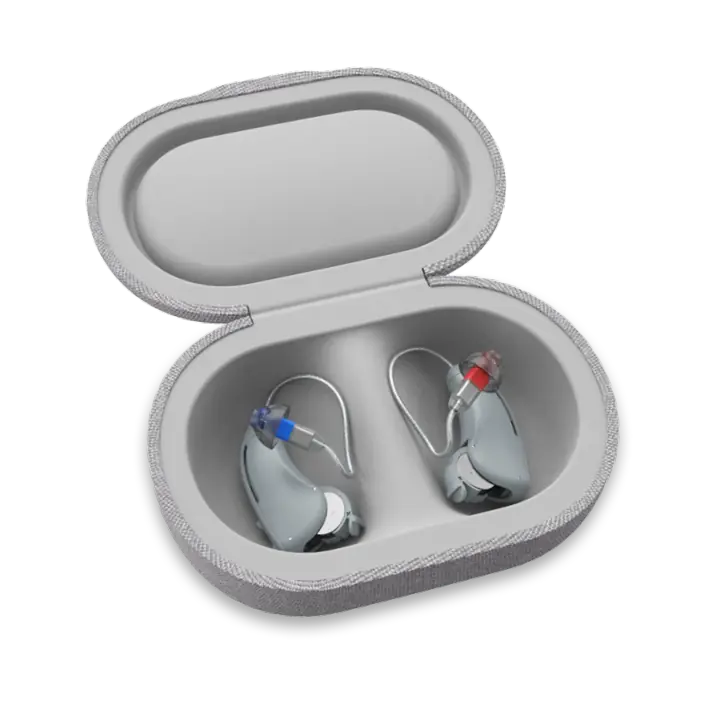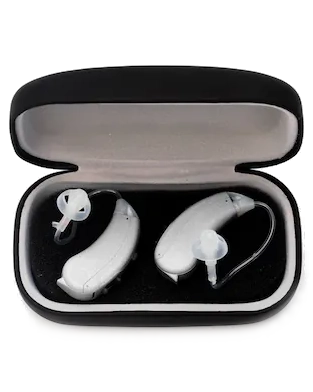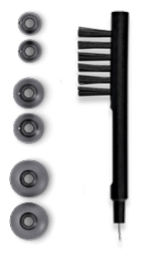What Are the Latest Trends in Hearing Aids?
Published: July 14, 2020
Updated: March 10, 2021
Traditionally, hearing aids were invented to amplify sound in persons who experienced hearing impairment. But thanks to the latest trends in hearing aids today, they have developed into advanced processing devices using the latest technological developments to give the user a natural sound experience. These technologies have revolutionized the hearing capabilities of hearing aids and provided an opportunity to improve users’ lifestyles.
Latest trends in hearing aid technology
Rechargeable hearing aids
This means that the hearing aids can be charged as one would charge a smartphone. The advantages are:
- That you don’t need to replace batteries. This is especially beneficial for people who may experience dexterity difficulties re-inserting new small-sized batteries.
- Cost-effective and convenient (the user does not have to worry about running out of batteries).
- Environmentally friendly.
- Portable charging cases are available for ease of use.
- Chargers double up as a dehumidifier.
Wireless connectivity
The hearing aids can be connected directly to a number of devices that offer direct streaming via Bluetooth connectivity, allowing the user to hear the audio directly in the ear. Examples of such devices are the smartphone, TV, PC, and tablet.
App-based fine-tuning and remote consultations
Smartphone applications have been developed to give the user more control over the listening situations they are exposed to. This enables the user to fine-tune and control the hearing aid settings through the application.
The hearing aid industry has been further expanded to offer the full hearing aid fitting experience online through the combined use of online hearing tests and smartphone applications to provide a more refined sound experience. Because such solutions are remote, they have the potential to more precisely fit the users’ individual needs, from the comfort of the user’s home. The app has also been used as an interface for remote consultations with hearing healthcare providers.
Own Voice Processing
A hearing aid can create an unnatural perception of a person’s voice. With this feature, the hearing aid detects the user’s own voice and differentiates it from external sounds and voices providing a more comfortable experience.
Health and wellness monitors
Hearing aids have built-in monitors that are used to track the user’s listening habits and to log preferences in a variety of listening environments. Although this has been a feature installed in hearing aids for a while, it has been enhanced using artificial intelligence (AI). The hearing aid will monitor adjustments users make in each space, log those preferences, use GPS to detect when the user returns to those places, and automatically adjust to preferred settings or send an app-based push notification to ask the user if she or he would like the device to adjust2.
Fall detectors and GPS location
People with hearing loss are at an increased risk of falling. New models of hearing aids can automatically notify up to three emergency contacts to alert them that a fall has occurred and locate where the person is.
Reducing the risks of comorbidity
AI capabilities provide an opportunity to focus on the physical activity of those with hearing loss, combatting known comorbidities. The sedentary lifestyles that often accompany aging can lead to obesity and cardiovascular disease. Hearing aids with embedded step tracking allow users to exercise without additional devices and provide notifications to users to keep moving throughout the day and reach the recommended goals3.
Language translation
AI has also introduced the ability for hearing aids to detect human speech and perform real-time language translation. A hearing aid developed by Starkey, the Livio AI, offers translation in 27 languages, including French, Japanese, and Arabic. The device translates live speech into English in real-time.
3D Printing
3D printers employ the use of AI to produce hearing aids, to build the shell layer by layer, resulting in a hearing aid that is stronger, tougher, more comfortable, and thinner than the conventional devices, with deeper penetration into the ear and a more discreet appearance.
Improved speech clarity
This is a feature that is constantly being reworked and improved in hearing aids to sound as natural as possible. Advanced features incorporate narrow directionality, echo adjustments, and spatial configurators to deliver the highest level of speech clarity in the most challenging environments.
Background noise
Background noise makes it difficult for hearing aids users to receive the desired signal. The introduction of AI and new technological advancements mean that background noises are more easily identified and filtered out. This includes feedback and whistling.
Tinnitus therapies
The perceived sound of tinnitus (ringing in the ear) can be distracting and make it difficult to concentrate on other sounds. Tinnitus therapies provide different static noise types and ocean wave signals to provide some relief.
What is the future of hearing aids?
The introduction of AI and machine learning (ML) in hearing aids bring the vision for everyone to enjoy better hearing without limitations to fruition.
If we look at how trends will affect hearing aids in the future, two factors stand out. One is speed. 5G networks are super-fast and the two-way Internet connection protocol means that hearing aids may be able to connect to the internet without a smartphone as a medium for processing. This would mean extended processing power, improved network integration, and increased automation.
The second factor is power. As microchips become smaller and more efficient, the trend is towards lower energy use. As power demands fall, it may even be possible to make more use of alternate energy capturing technologies.






